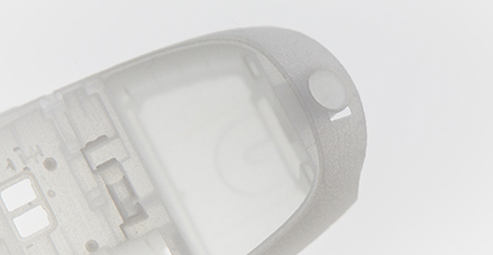EOS, supplier in the field of industrial 3D printing of metals and polymers, is showcasing its Fine Detail Resolution (FDR) technology for processing polymers for the first time at the formnext trade show in Frankfurt, Germany (November 19-22, 2019, hall 11.1, stand D31).
EOS has developed a solution for powder-based industrial 3D printing using a CO laser. This will make it possible to produce delicate, robust parts with fine detail resolution surfaces and minimum wall thicknesses of only 0.22 mm, the company says. It will open up new applications for series production and will offer a broader variety to the industry when choosing a suitable 3D printing technology from EOS for processing polymers, the company reports.
FDR is a solution for wherever delicate structures, surfaces with a fine detail resolution and thin wall thicknesses are requirements, the company says. Unlike the existing EOS product range, a 50-watt CO laser is being used. This laser type creates an ultra-fine laser beam with a focus diameter that's half the size of current SLS technologies. This enables new exposure parameters resulting in parts with superfine surfaces. Initially, the certified material PA 1101 is used and is processed in layer thicknesses of 40 and 60 µm. It features high impact resistance and elongation at break. It is made from renewable raw materials.
The FDR technology is being developed for the EOS polymer production platform and opens up options for new applications in polymer-based additive manufacturing, such as for filter units and fluid channels, plugs and other electronic components as well as consumer goods such as eyeglasses. EOS is presenting this technological concept for the first time at formnext 2019.
“The new technology will combine the best of two worlds—the detailed resolution of stereo lithography (SLA) with the durability and quality of selective laser sintering (SLS),” Dr. Tim Rüttermann, senior vice president Polymer Division, says. “In future, depending on application requirements, customers will therefore be able to choose between the existing EOS P 500 version with a CO2 laser for high productivity and material flexibility; or the CO laser-based FDR technology for manufacturing extremely delicate components; or, if the focus is on maximum productivity with dedicated application material, they can decide for the upcoming EOS LaserProFusion technology concept that was showcased for the first time at the formnext 2018.”
EOS P 500 SLS Technology
The EOS P 500 platform is primarily designed for companies that want to produce polymer components reproducibly on an industrial scale using additive manufacturing. In an initial step, a CO2 laser with a focus diameter of 0.5 mm and a laser output of 2x70 watts will be used on the platform. This automatable system makes it possible to minimize costs per part and process polymer material classes such as PA 12, PA 11, PA 6, TPU and other polymers. The use of this platform will also open up applications in the mobility and automotive industry as well as in the manufacturing of electronic components.
Sources: Press materials received from the company and additional information gleaned from the company’s website.
About the Author
Press releases may be sent to them via [email protected]. Follow Robotics 24/7 on Facebook
Follow Robotics 24/7 on Linkedin
Article topics
Email Sign Up
















